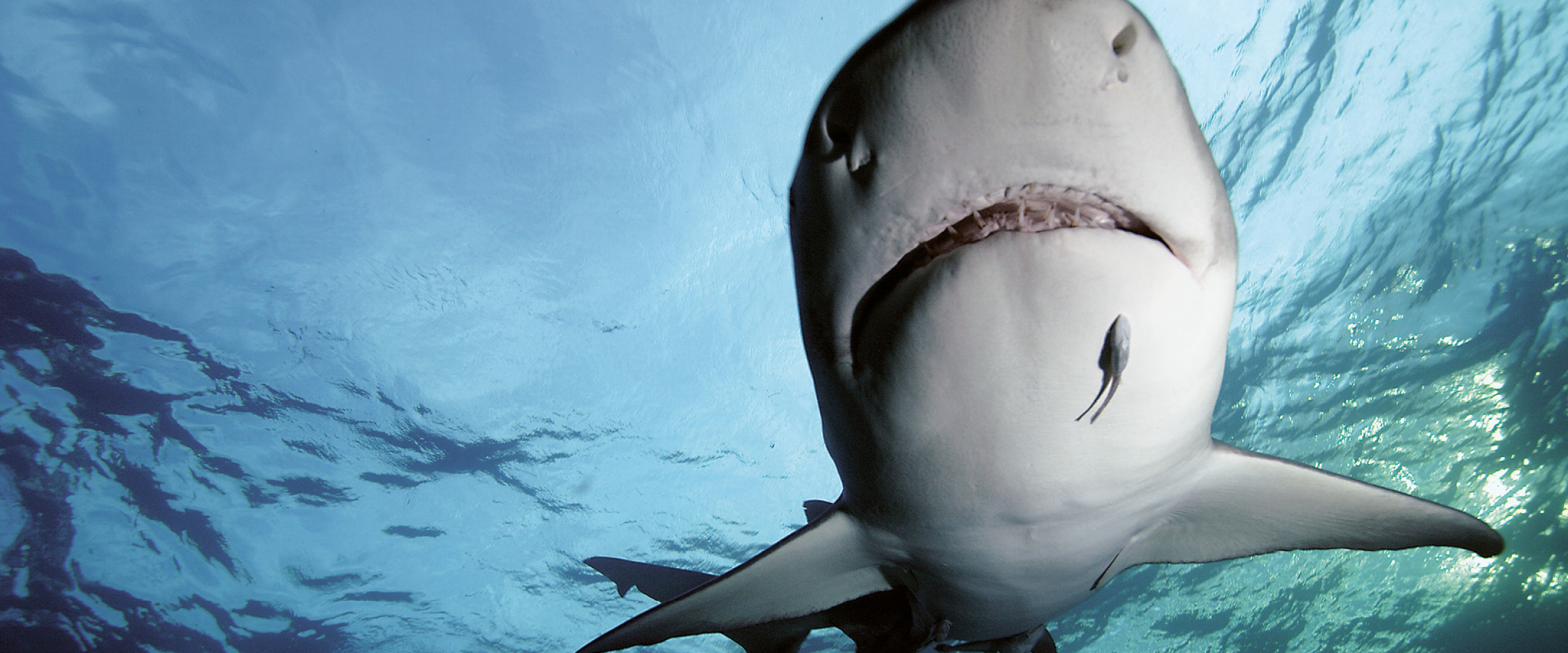
Teeth off the shelf
After the “third” set of teeth, come the fourth, fifth, sixth… A shark’s jaw always has spare teeth waiting to regenerate throughout its life.
400 million years of evolution have evolved a shark’s teeth into a lethal tool. As opposed to man, sharks feature not a single row of teeth, but several rows at once. They form continuously in a dental comb on the jaws’ inner surface. Therefore there are always several consecutive stages of teeth forming at the same time. To begin with, the rows of teeth are angled downward. After breaking through from the epidermis, they slowly straighten up. The straightening up and constant pushing forward of the teeth is enabled by a relatively free but nevertheless robust attachment to the connective tissue of the jaw cartilage. So sharks’ teeth, unlike mammalian teeth, do not have proper roots.
Snout packed with up to 240 teeth
Normally five rows of teeth are apparent, and as many as seven in a bull shark. As most teeth are still folded back, only a few are really in service. Cat sharks have three rows, and the mighty tiger shark only the foremost. Other shark species use all their rows of teeth at once. The absolute number of teeth varies between species of shark. The white shark, for example, has 23 to 28 teeth in the maxilla and 20 to 26 in the mandible. Five rows mean that such a predator has about 240 teeth in its snout.
On the attack: teeth go missing
Due to the advancing replacements, the teeth are ejected from the mucosa as time passes and are inevitably dropped. During attacks it is common for sharks to lose several teeth. Sharks’ teeth that have broken off are discovered again in the skin of prey. Within a matter of hours, new teeth take the place of teeth that have broken off. Whereas most species of sharks renew their teeth individually, there are also species, such as the cigar shark that switch the whole set at once.
New teeth after just nine to twelve days
Data differs on the lifespan of sharks’ teeth. A University of Tübingen study, for example, found that leopard sharks replace their front teeth after just nine to twelve days. Replacement is 28 days in the case of the five-foot nurse shark. Tiger sharks are said to lose about 140 teeth each year. Scientists stress that the regeneration speed not only depends on the species of shark, but also on the shark’s age and food range. Furthermore, there are indications that teeth last longer in colder water for some shark species.
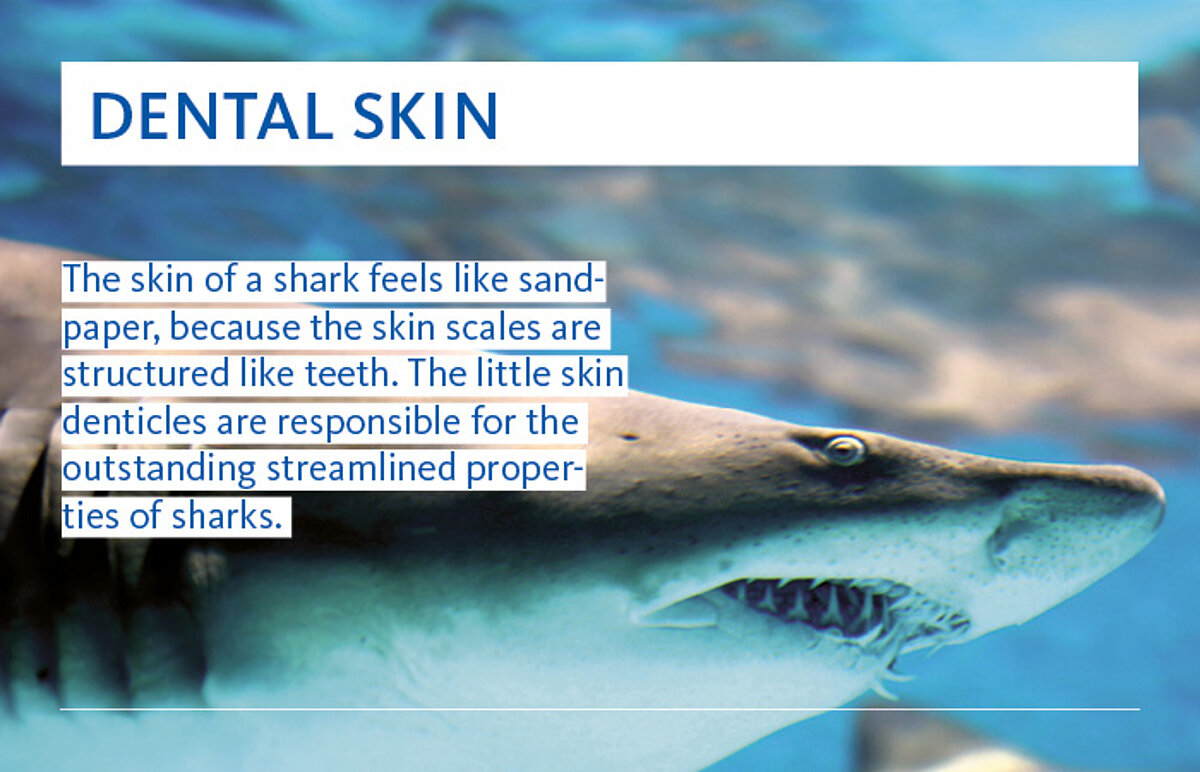
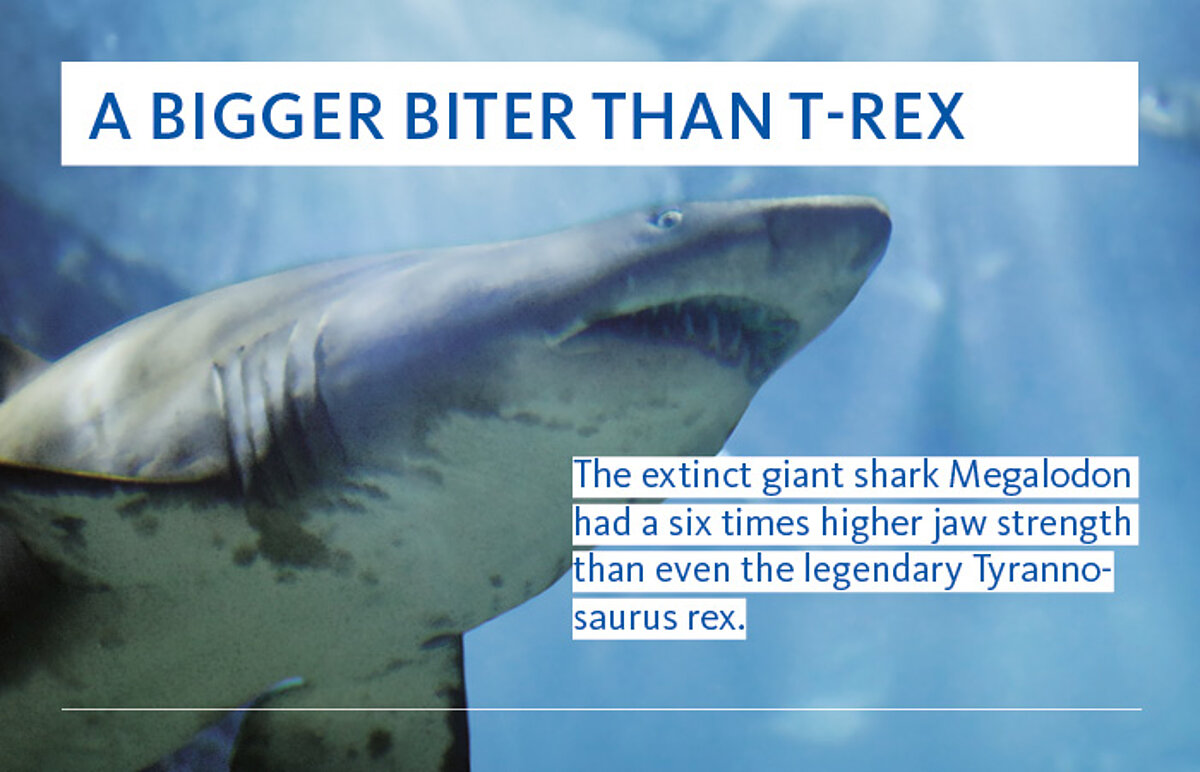
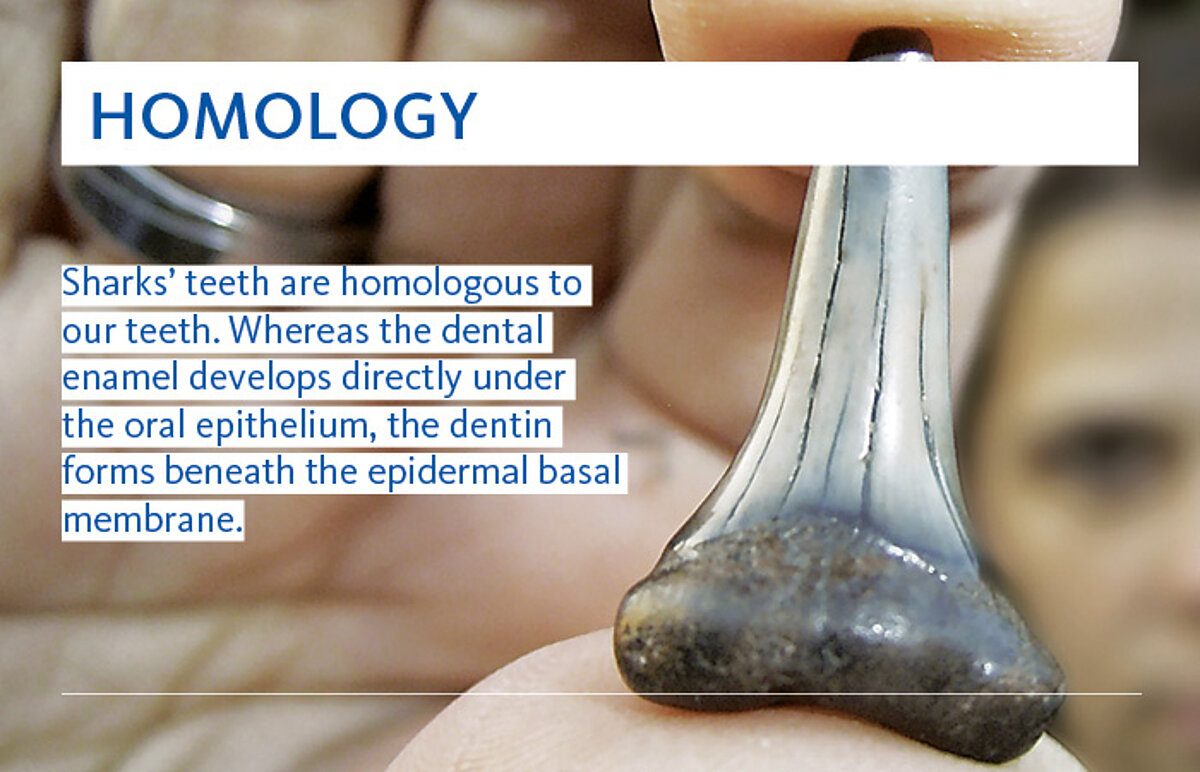
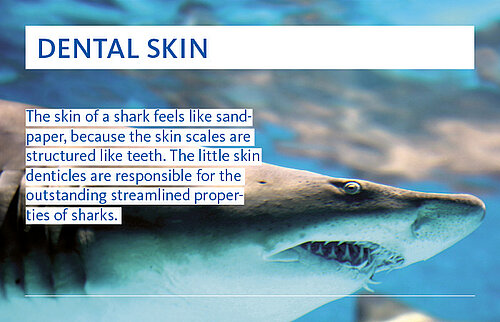
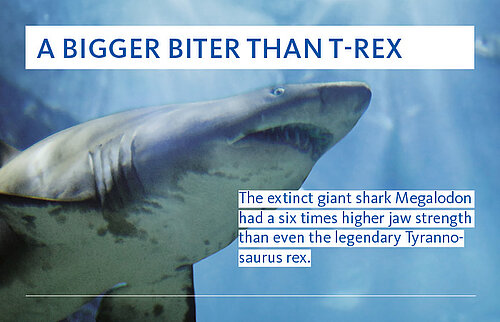
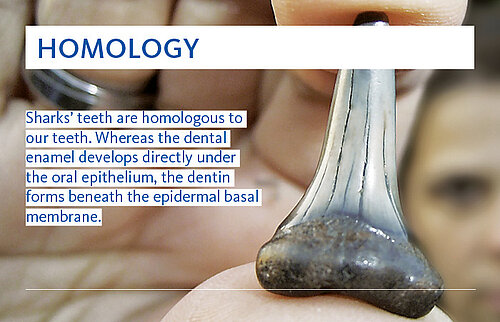
Unique jaw strength
The white shark seems to have the greatest jaw strength of all the living animals. Using computer models, an international team of researchers has ascertained that Carcharodon carcharias can generate a force equivalent to 1.8 tons; i.e., a shark’s bite is about 20 times stronger than a human’s.
The 50-foot long Megalodon probably had the all-time strongest bite. This extinct giant shark managed to deliver an 18-ton bite. As a reference, lions bite with a power equivalent to a half ton, and the extinct Tyrannosaurus rex achieved three tons.
Photo Header: iStock.com/c cdascher


